The roof of your home consists of the roof covering and the structure that supports it.
The roof covering is designed to keep as much water as possible out of your house. In the Houston area, most residential roof coverings are based on asphalt shingles although there are other options out there.
Any shingle system is not impervious to all water.
Shingle roof coverings used a layered defense to keep the water out.
The top layers are the overlapped shingles themselves.
The next layer is usually roofing felt, a paper or fiberglass material impregnated with asphalt. Water that gets past the shingles is blocked by the felt from reaching the underlying structure.
Ideally, there are no holes in the defense your roof provides.
In reality, there are many holes and those holes are our most common trouble spots.
We must penetrate the roof covering for many things: plumbing vents, chimneys, flues, skylights, and ventilation for the roof itself.
Why would a roof need ventilation?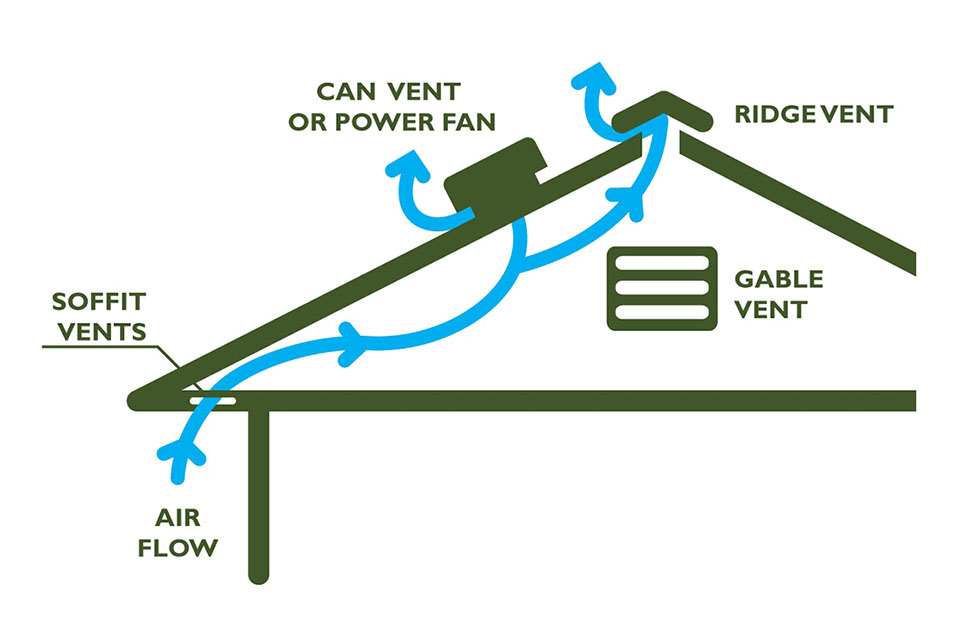

In part one we talked about all of the sources of moisture inside your home. Well much of that moisture works its way upward into the space below your roof structure. That space is commonly known as an attic.
Moisture trapped in the attic can lead to damage immediately as in the case of a large leak or it can lead to decay and mold if small amounts are continuously present in one location. Changing the air or ventilating the roof structure and the attic is the primary means of removing that moisture. If your home has an attic that is not air conditioned (heated and cooled by the home’s mechanical systems) then you must be sure it is properly ventilated. Air must come in from the bottom and exit near the high points. Ventilation designed in this manner takes advantage of the attic space normal heating in the sun. Hot air rises and as it exits your roof it pulls cooler air in.
Vents for the roof and attic comes in several forms. The least likely to cause a leak are properly installed ridge vents. Ridge vents run along the ridge line of the roof and allow the rising hot air out of the house. The photo shows a ridge vent installed over the gap in the roof structure.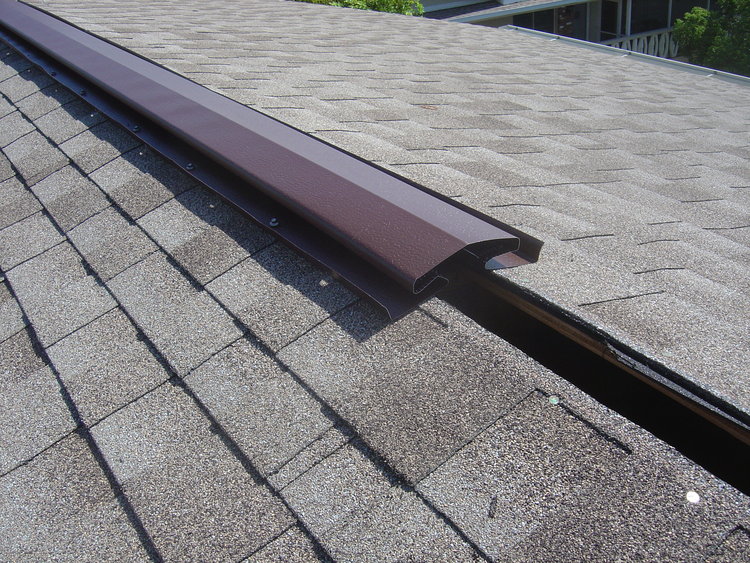 It is a good illustration of how the home is built to allow air to escape at the top. More problematic attic vents are those that penetrate the field of shingles such as turbines or box vents. These roof penetrations must be properly installed and regularly maintained or they will allow water into the house. Vents through the roof for plumbing, fireplaces, furnaces, water heaters or for the roof itself share common traits. They create a hole in the roof covering that must be covered in a manner that prevents water intrusion for the long term. Those coverings then must be inspected and maintained on a regular basis.
It is a good illustration of how the home is built to allow air to escape at the top. More problematic attic vents are those that penetrate the field of shingles such as turbines or box vents. These roof penetrations must be properly installed and regularly maintained or they will allow water into the house. Vents through the roof for plumbing, fireplaces, furnaces, water heaters or for the roof itself share common traits. They create a hole in the roof covering that must be covered in a manner that prevents water intrusion for the long term. Those coverings then must be inspected and maintained on a regular basis.
 It is a good illustration of how the home is built to allow air to escape at the top. More problematic attic vents are those that penetrate the field of shingles such as turbines or box vents. These roof penetrations must be properly installed and regularly maintained or they will allow water into the house. Vents through the roof for plumbing, fireplaces, furnaces, water heaters or for the roof itself share common traits. They create a hole in the roof covering that must be covered in a manner that prevents water intrusion for the long term. Those coverings then must be inspected and maintained on a regular basis.
It is a good illustration of how the home is built to allow air to escape at the top. More problematic attic vents are those that penetrate the field of shingles such as turbines or box vents. These roof penetrations must be properly installed and regularly maintained or they will allow water into the house. Vents through the roof for plumbing, fireplaces, furnaces, water heaters or for the roof itself share common traits. They create a hole in the roof covering that must be covered in a manner that prevents water intrusion for the long term. Those coverings then must be inspected and maintained on a regular basis.The covering or flashing as it is known can be integral to the vent as in this photo. (Noticed the unsealed nail heads! A leak in the making)
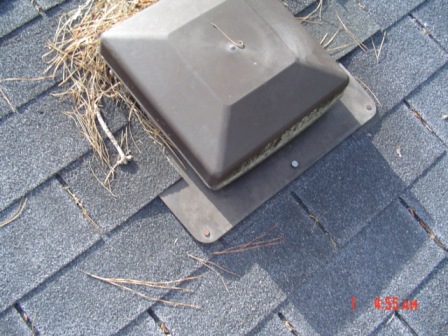
Penetrations such as plumbing vents may have a separate boot fitted over them as in this photo. (Notice the deterioration of the material due to exposure. This lets water straight into the attic.)
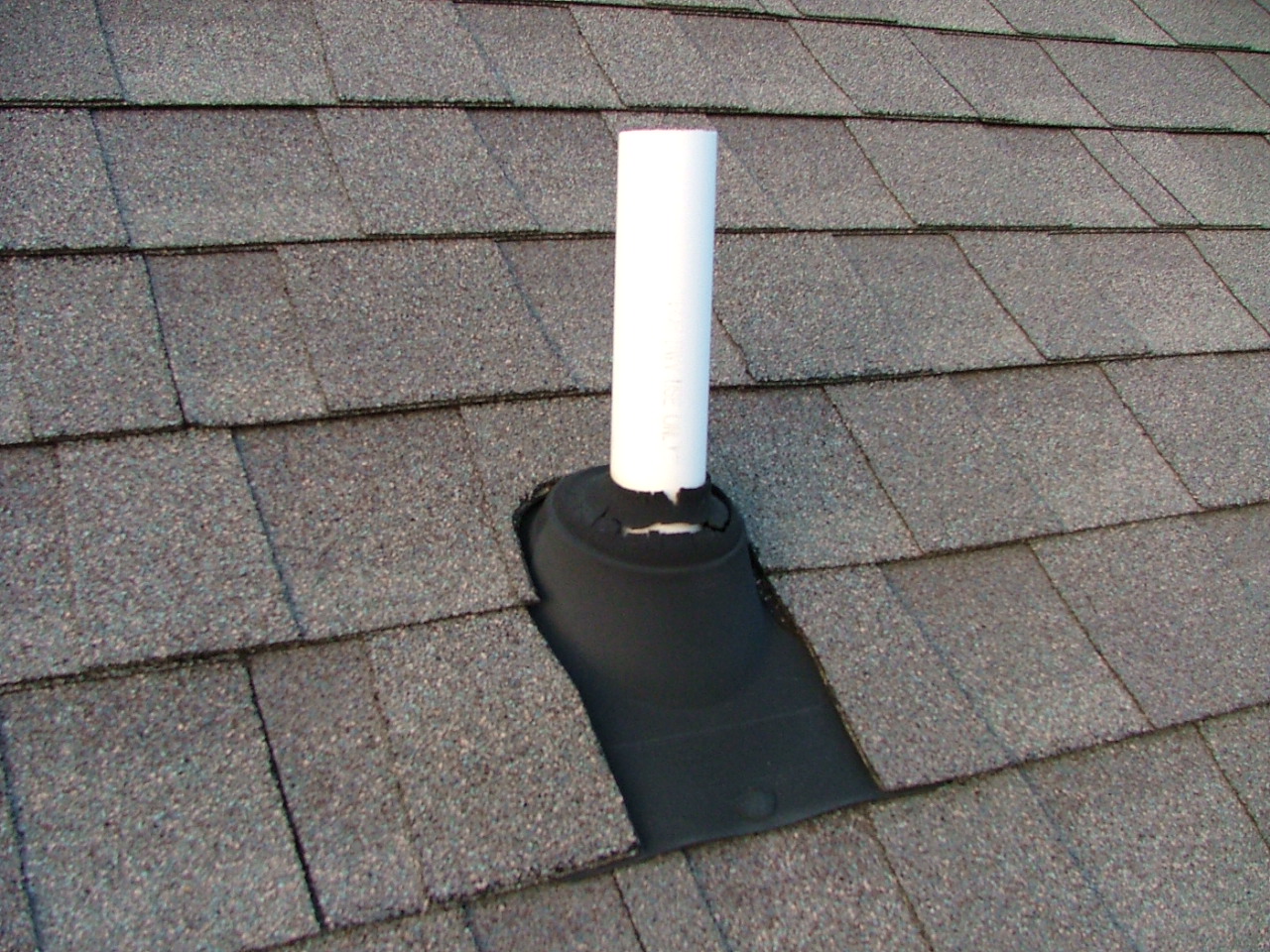
Masonry chimneys require a bit more complex flashing as in this diagram.
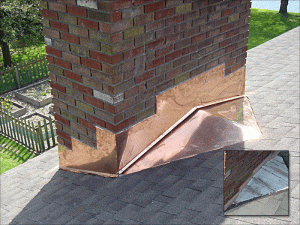
Caulks and sealants are commonly applied to nail heads and final edges. These materials wear very quickly in the heat and sun of Houston and are the weak point in the system. As such they must be inspected and maintained to prevent leaks. Using these materials to repair an existing leak due to improperly installed or deteriorated flashing, whether metal or another material, is quite often unsuccessful and always a temporary fix.
Now that we have covered protecting the roof covering penetrations, what about the roof covering material itself? Asphalt shingles have a relatively short useful life. This is because of the environment they are exposed to. Sunlight is the enemy of your shingles. Ultraviolet radiation rapidly deteriorates the asphalt. Roofing manufacturers apply a layer of “sunscreen” in the form of tiny granules to slow down this deterioration. It is important to keep this layer of granules intact. That means not allowing any mechanical action to wear areas into the granule protection. Mechanical action can be in the form of tree limbs rubbing, water discharging from a gutter directly to the roof surface and heavy foot traffic. Move the teenagers downstairs so their nightly escapes don’t wear out your shingles!
The southern exposure of your roof in Houston will wear faster than the north so pay extra attention there. Harris and Fort Bend county home inspectors encounter roof defects on a daily basis. The harsh environment in southeast Texas can rapidly deteriorate a poorly maintained home and the roof is vital to preventing that. On average, a quality roof will be serviceable for up to 25 years with proper inspection and maintenance. This period is quite often considerably shortened by neglect. Roof inspection and repair is difficult for the average homeowner. At Spot On Inspection, we recommend the homeowner keep the trees away from the roof and to call in a roofing contractor you trust to evaluate your roof every year or two. If you don’t have one, you can call us for a Safety and Condition inspection and we will check out your roof structure and roof covering condition as part of our annual overall checkup. In the next installment of the Ever Present Enemy we will discuss the role your exterior walls, windows and doors play in controlling moisture. Stay Tuned!
© 2017 Patrick Miceli

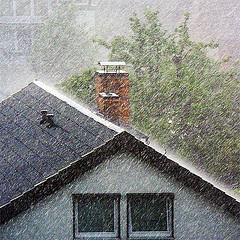
Recent Comments